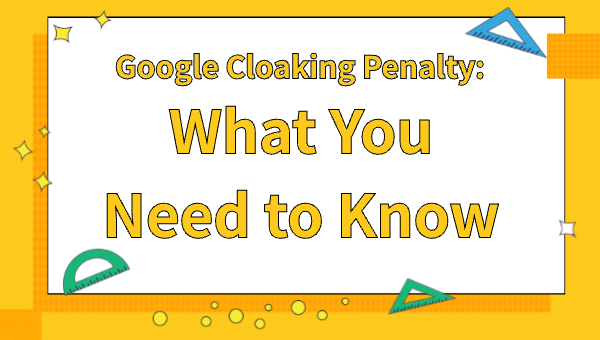Google Cloaking Penalty: What You Need to Know
Introduction: Understanding the Google Cloaking Penalty to Protect Your Website
In the digital marketing and SEO world, cloaking is a controversial technique that involves showing different content to search engines and users. While it can be used for legitimate purposes like localization and device optimization, cloaking is often associated with deceptive practices aimed at manipulating search rankings or bypassing ad reviews. Google has strict policies against deceptive cloaking, and violating these can lead to severe penalties. This article explores what Google cloaking penalties entail, how to recognize if you've been penalized, and best practices to avoid penalties while effectively using cloaking technology.
What Is Cloaking According to Google?
Cloaking refers to the practice where a website presents different content or URLs to human users and search engines. While some forms of cloaking are legitimate (e.g., showing mobile-optimized pages to mobile users), Google defines cloaking as a violation when the content presented to crawlers is substantially different from what users see, especially when done to deceive or manipulate rankings.
Types of Google Penalties Related to Cloaking
Ranking Demotion: Google lowers the search ranking of the offending pages, causing traffic loss.
Removal from Index: Severe cases may result in complete removal of pages or even the entire site from Google’s index.
Manual Actions: Google can manually penalize websites, sending notifications via Search Console, requiring prompt corrective action.
Algorithmic Penalties: Automated algorithms like Panda or Penguin may indirectly penalize cloaked content.
Common Cloaking Violations That Trigger Penalties
Keyword Stuffing for Crawlers: Displaying keyword-dense content to bots but simplified or irrelevant content to users.
Sneaky Redirects: Showing one page to users but redirecting search engines elsewhere.
Displaying Fake Content: Showing search engines fabricated or unrelated content.
Mirror Pages: Creating special versions of pages for bots that users cannot access.
How to Detect If You Are Penalized for Cloaking
Check Google Search Console for manual action notices related to cloaking.
Monitor sudden drops in organic traffic or keyword rankings.
Use online tools or scripts to compare what search engines see versus what users see.
Look for warnings or “unsafe content” notifications in Google search results.
Best Practices to Avoid Google Cloaking Penalties
Ensure content presented to users and search engines is consistent and transparent.
Use cloaking only for legitimate purposes such as localization or device targeting.
Regularly audit your website content and technical implementation for inconsistencies.
Employ reputable and compliant cloaking services like adcloaking.com that prioritize both effectiveness and policy compliance.
Use robots.txt and meta tags correctly to communicate crawl permissions.
Steps to Recover from a Google Cloaking Penalty
Conduct a thorough audit to identify all cloaking violations.
Remove or fix deceptive content and ensure uniformity across user and crawler views.
Submit a reconsideration request through Google Search Console with details on remediation.
Improve overall website quality and user experience to regain trust.
Implement strict internal policies to prevent future violations.
Legitimate Uses of Cloaking and How to Stay Safe
Cloaking for multi-language or regional versions.
Serving device-specific content (e.g., mobile vs desktop).
Personalized user experiences without misleading search engines.
Always document cloaking implementations clearly and avoid deceptive tactics.
Conclusion
Google cloaking penalties can severely impact your site’s visibility and revenue. Understanding what constitutes cloaking, how penalties work, and following best practices is essential for any digital marketer or webmaster. If you want to protect your advertising campaigns and improve conversion rates while staying compliant, visit adcloaking.com for professional cloaking solutions tailored to your needs.

